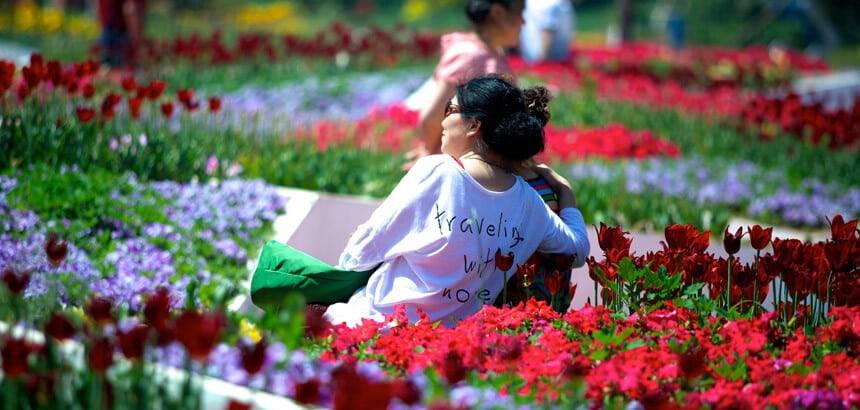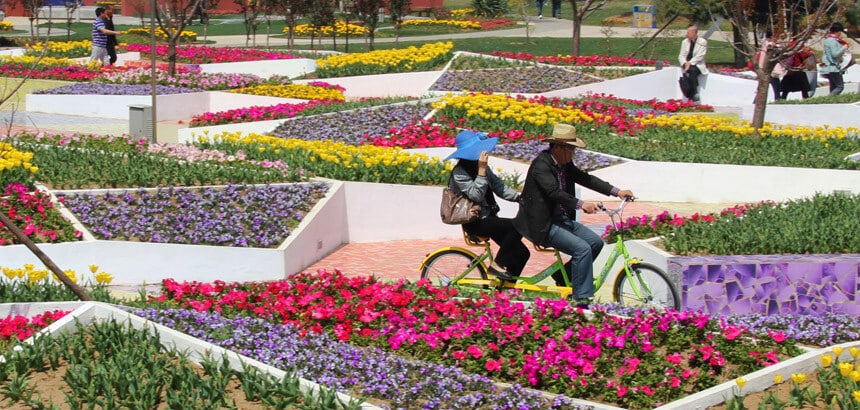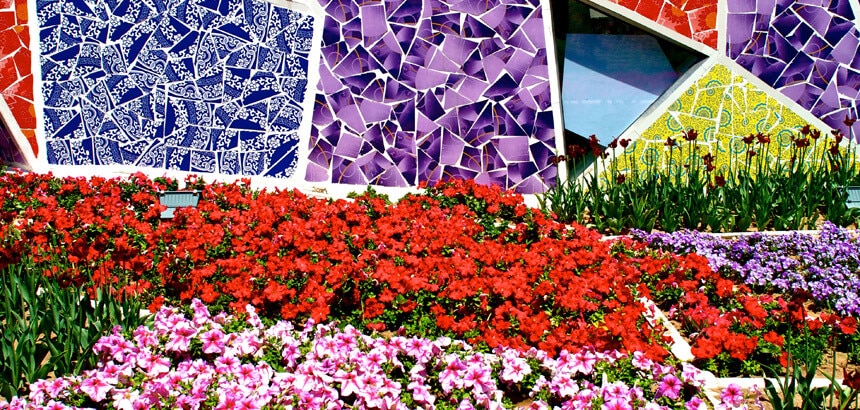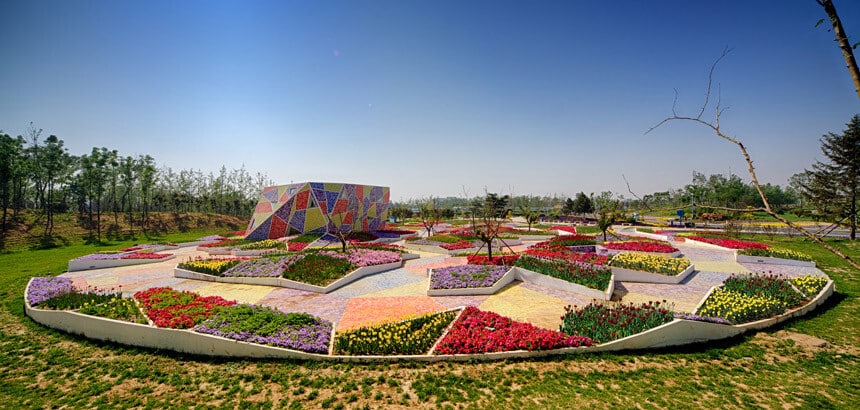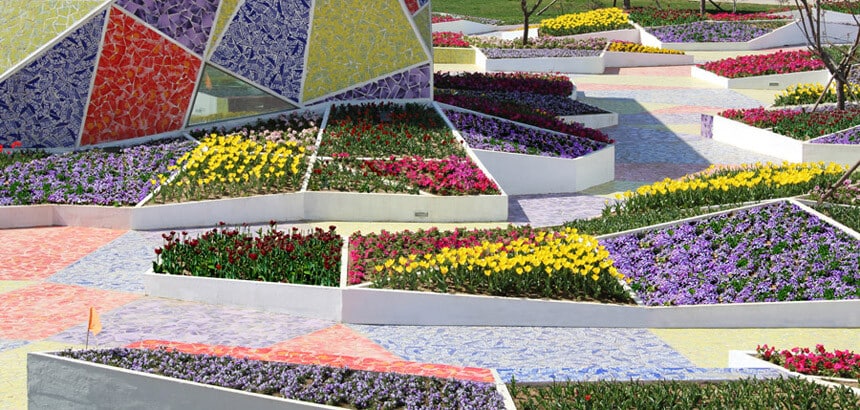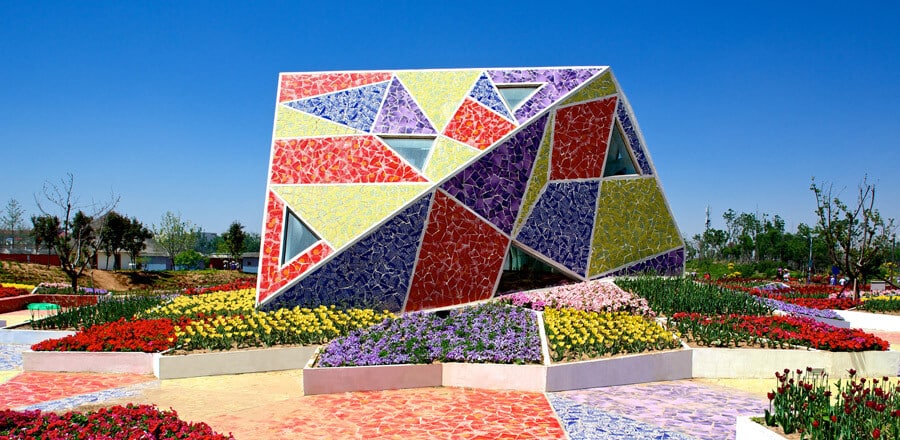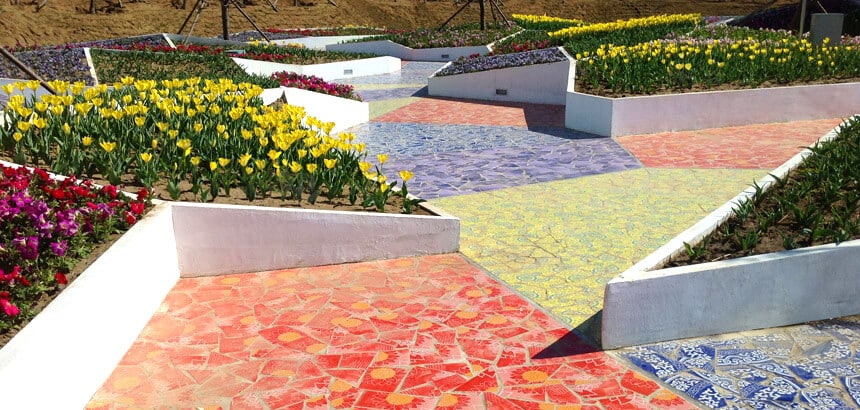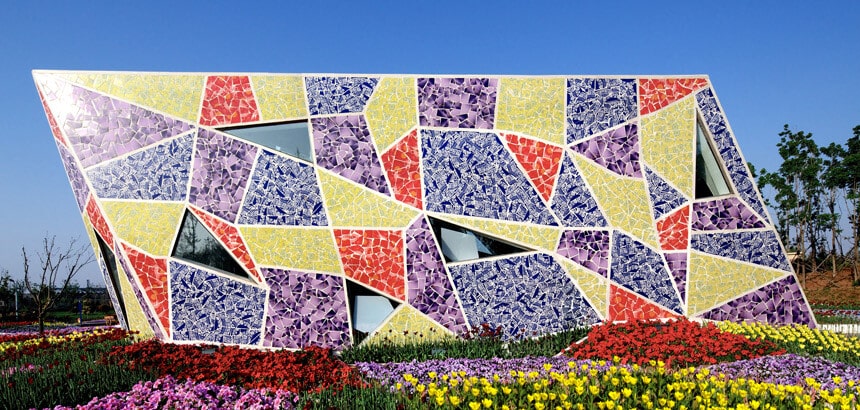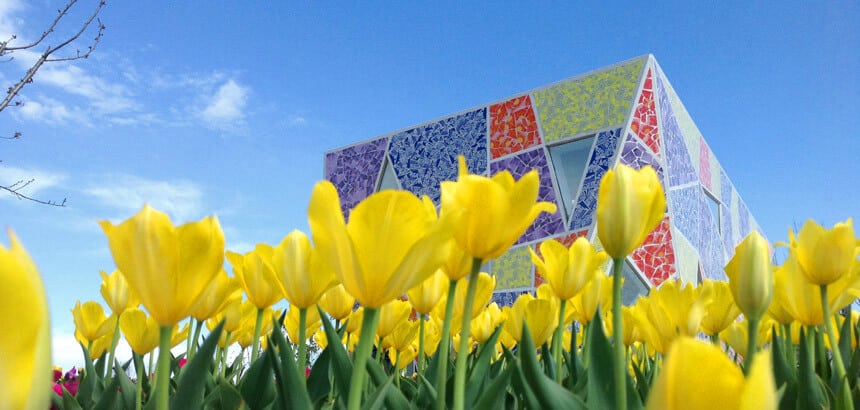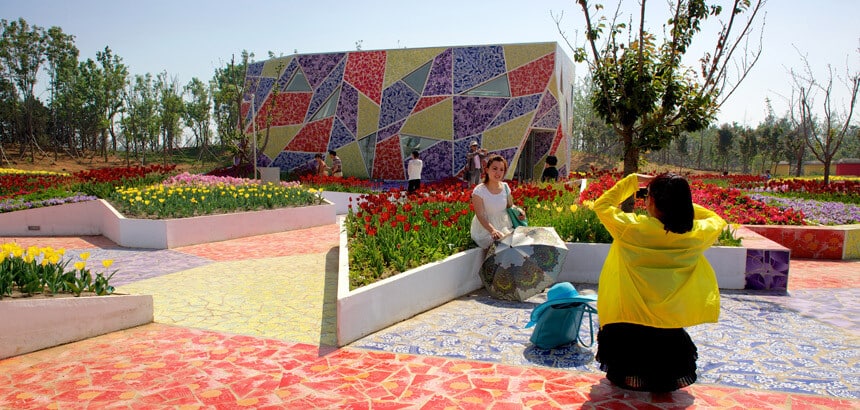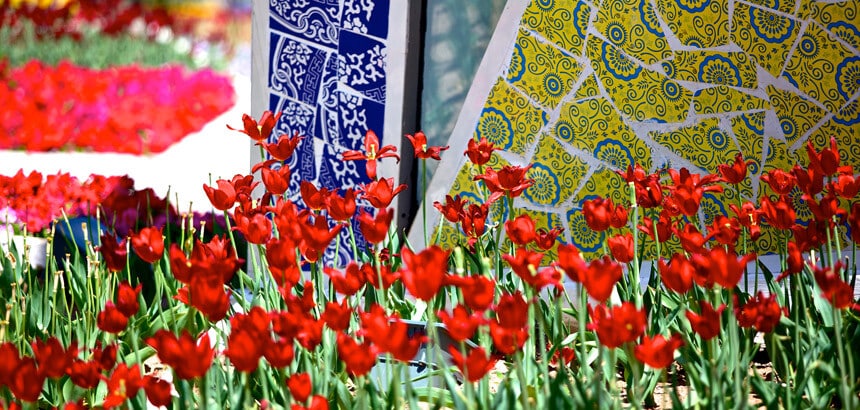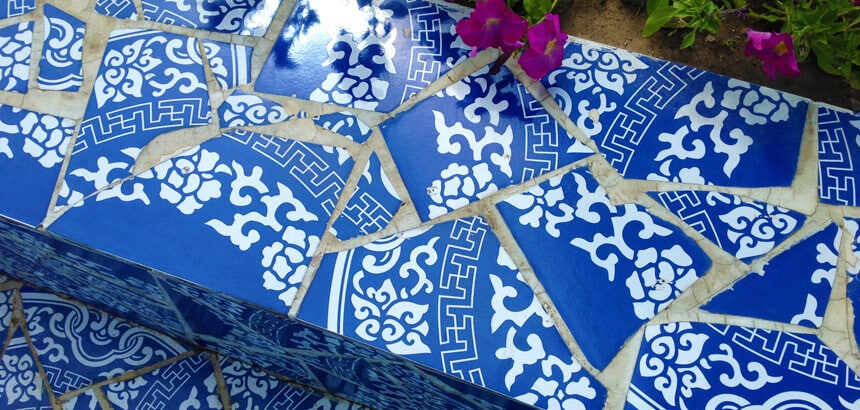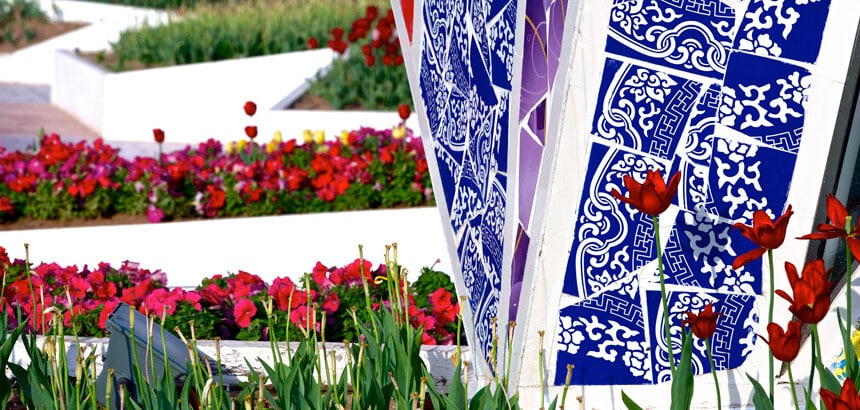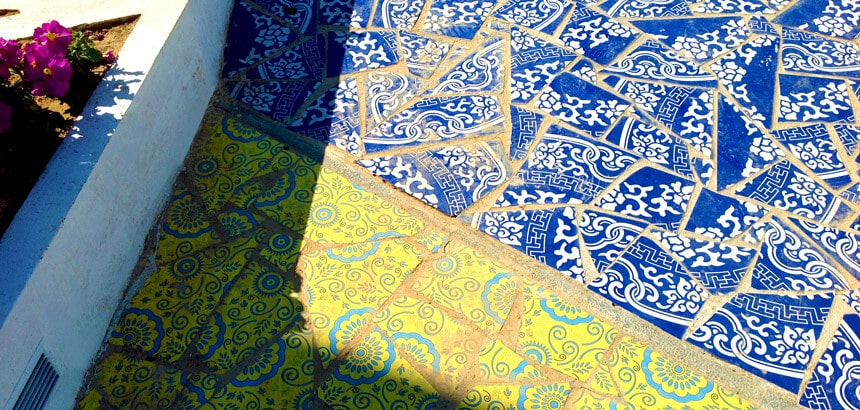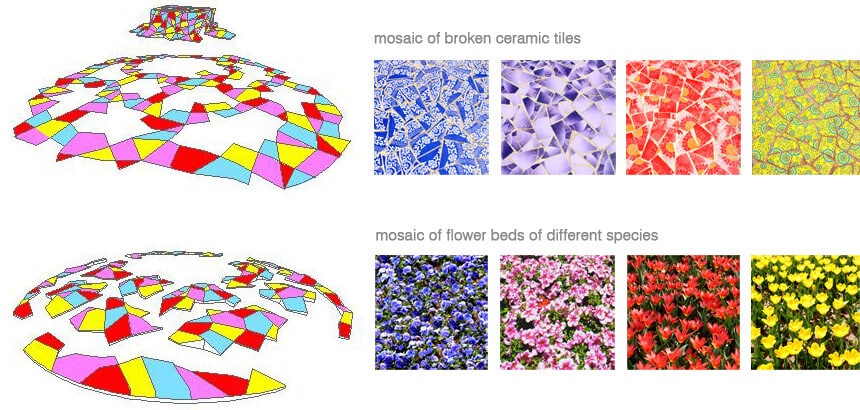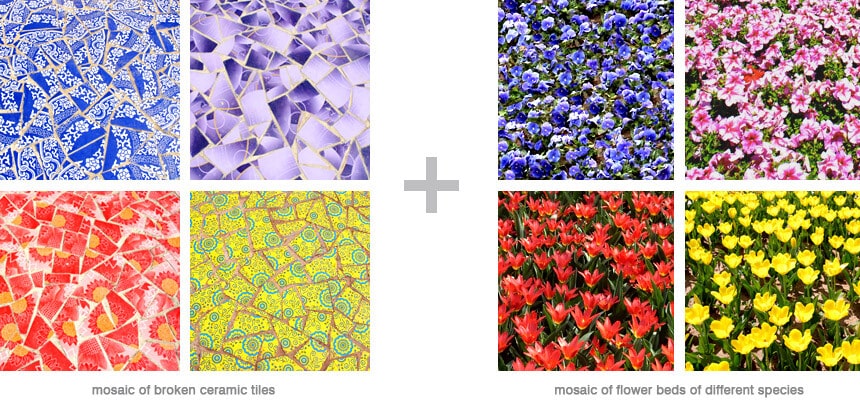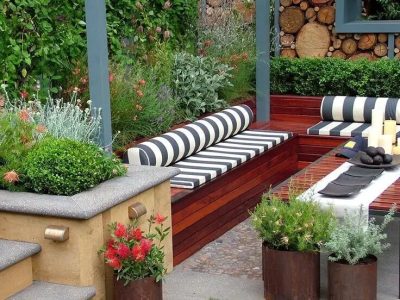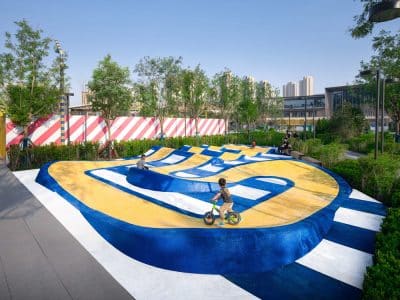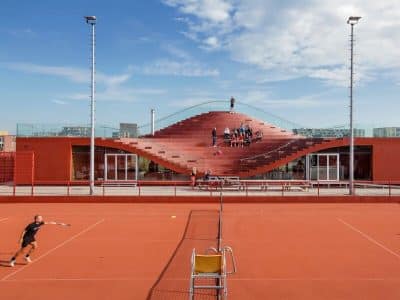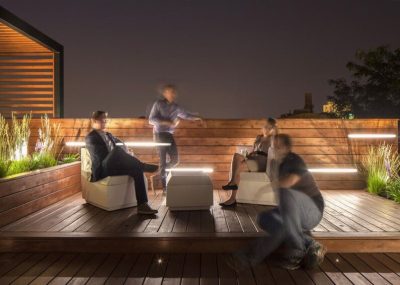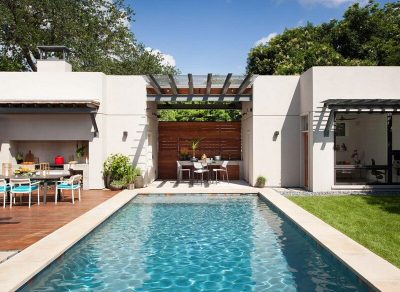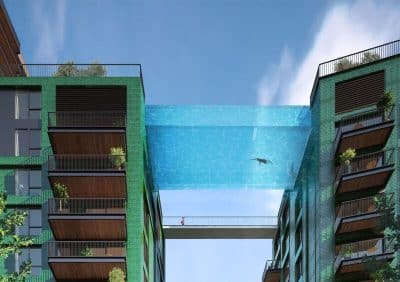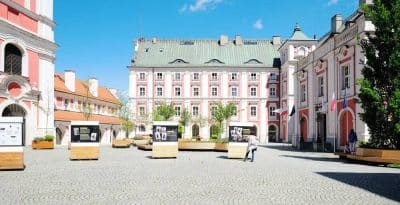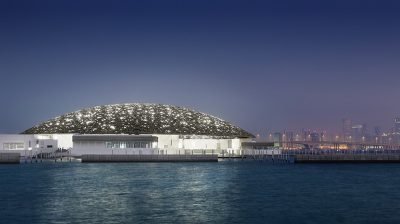Jinzhou city, with a population of three million inhabitants, located less than 500 km northeast of Beijing, recently benefits of a new public park having an area of 176 ha, located on a site recovered from the sea. If in the first phase, in 2013 the park has hosted Jinzhou World Landscape Art Exposition, after the closing of the exhibition, in 2014, the zone will become the center of a new urban development.
Considering the development plans of the area, 20 houses of architecture and design were requested to achieve 20 projects, on circular surfaces of the same size in different areas of the park. All projects had as theme the concept of cultural hybridization, phenomenon developed over many centuries of trade and cultural exchanges between East and West.
The projects design had to emphasize the paradox of globalization, although this was associated with the destruction of the local identity, it provides the possibility and it can generate the identity. The same thing is proposed by the Mosaic Park realized by the Casanova Hernandez Architects from Rotterdam, Netherlands. On the one hand, Dutch designers have chosen to use different colored ceramic pieces in order to realize alleys, banks from the park and for the museum facades. They wanted to evoke the old tradition of the Mosaic, that was widely spread in Europe by the Roman Empire. On the other hand, the geometry of the park is inspired by the crackled glaze of the Chinese porcelain developed from the 10th century during the Song Dynasty in the Ru Ware and Ge Ware ceramic pieces.
